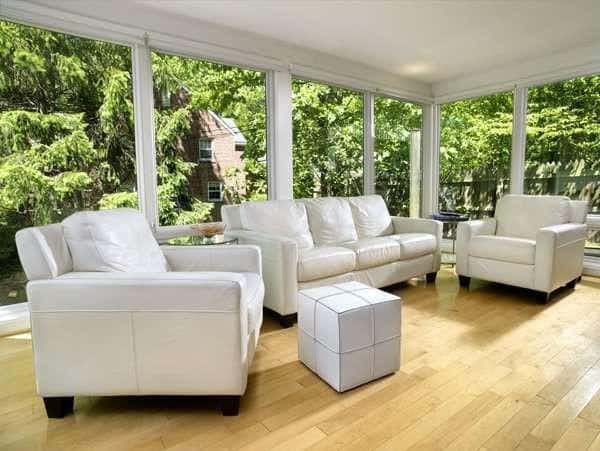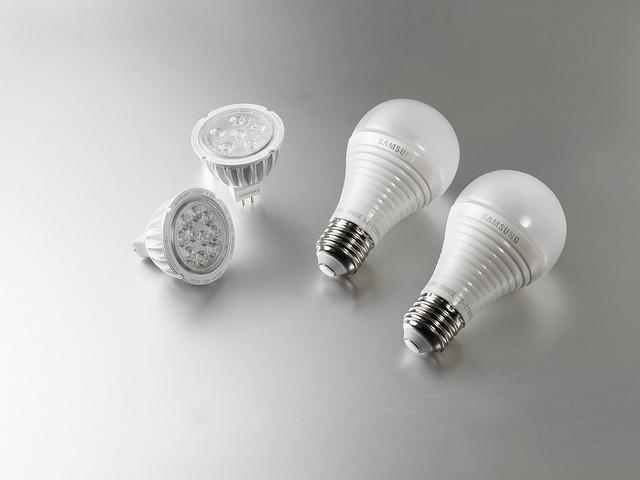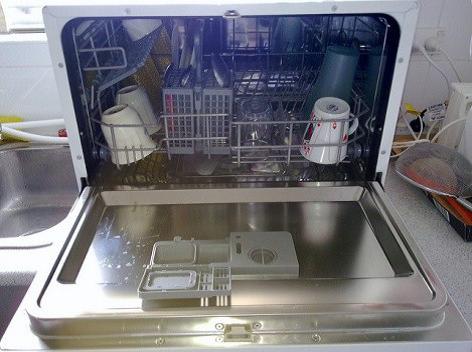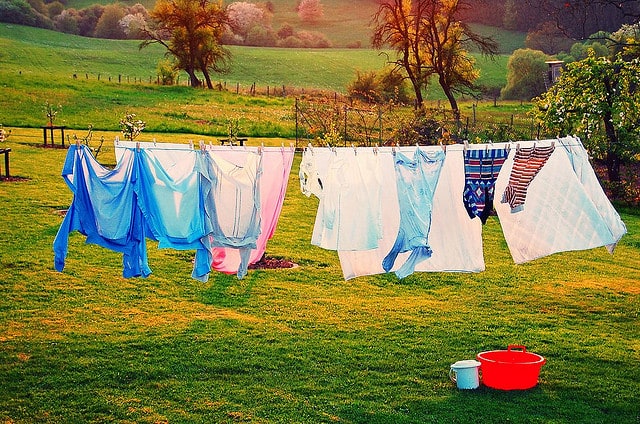151 Ways to Save Energy
The consumption of fossil fuels has been going at a steady pace since last century and has contributed much to the degradation of our environment. Climate change, global warming, extinction of several endangered species, depletion of ozone layer, increase in air pollution are few of the effects from which our environment is suffering. Although many countries have taken steps to move toward clean and green energy sources like solar energy, wind energy and geothermal energy to save energy, still there is long way to go before we can leave fossil fuels behind and depend on these natural sources of energy for our daily needs.Below are 151 ways that you can use to save and conserve energy and make this planet a better and clean place for our future generations to come.
Heating Systems
1. Inspect windows and ductwork for any air leakage. If you do feel air leaking at duct joints, use duct tape to seal them. Winterize windows with weather stripping (for all movable parts) and caulk (for non-moving parts). Eliminating these leaks can reduce heating costs up to 10%.2. Use kitchen, bath and other ventilating fans sparingly. Leaving them on too long will suck away a tremendous amount of household heat. Turn them off when their job is complete.
3. Turn down your thermostat at night or when you’re away for more than four hours during the day. Do not turn off your heating system entirely as this may cause pipes to freeze.
4. Keep heating supply registers and cold-air return registers clear of draperies and furniture to maintain proper air circulation.

5. Keep drapes and shades open during the day to let the sunshine in; close them at night.
6. Dust or vacuum radiator surfaces frequently. Dust and grime impede the flow of heat.
7. Keep lamps, TVs and other electrical appliances away from the thermostat. Heat from these appliances is sensed by the thermostat and could cause your furnace to shut off too soon and restart frequently.
8. Dress warmly to help retain body heat. Wear closely woven fabrics. Dressing in layers retains more heat than a single thick piece of clothing.
9. Keep garage doors closed in winter. An open garage door is just a giant hole that sucks warm air out of your home and lets cold drafts in.
10. When having company, turn down the thermostat before your guests arrive. Their collective body heat will add to the room temperature.
11. Warm with a space heater. A portable space heater can heat a single room without using your furnace to heat the whole house. Using a space heater to heat all or most of your home costs more. Always follow the manufacturer’s safety instructions when operating space heaters.
12. Use natural gas for heating. Consider switching to a natural gas heating system. Natural gas is less expensive than other heating fuels.
KITCHEN
13. Boil water in a kettle or covered pan; the water will boil faster and use less energy.14. Keep range-top burners and reflectors clean. They will reflect heat better and you will save energy.
15. Match the size of the pan to the heating element. More heat will get to the pan, and less will be dissipated.
16. Turn off the stove or oven five to 10 minutes before cooking time is up and let trapped heat finish the cooking.
17. Avoid opening the oven door repeatedly to check food while it cooks. This allows heat to escape and requires more energy to complete the job. Use a timer to let you know when food is ready.
18. Use small electric cooking appliances (such as portable grills and skillets) for small meals rather than the stove or oven.
19. Don’t preheat the oven unless absolutely necessary and then for no more than 10 minutes.
20. Avoid using the broiler as much as possible; it uses a great deal of energy.
21. Thaw frozen foods thoroughly before cooking.
22. Barbecue outside as much as possible during warm weather months.
23. Cook during cooler hours (early morning and late evening) whenever possible.
24. Use a microwave to cook meals whenever possible; it uses about half the energy of a conventional oven.
25. Use crock pots and slow cookers; they can be as much at 75% more energy efficient than stoves and ovens.
26. After using your oven, leave it open a crack to let warm air escape into your kitchen. (Don’t do this if you have children or pets around).
27. Use smaller kitchen appliances whenever possible. Microwaves, toaster ovens and slow-cookers can use 75 percent less energy than a large electric oven.
28. Water heaters should be close to kitchen so that it does not have to travel through a long distance of pipe and lose its heat.
WATER HEATER
29. Purchase an energy-efficient model. The initial cost may be more but operating costs are less in the long run. Consider a tank less or instantaneous water heater, which uses energy only when hot water is needed, rather than maintaining 40 gallons or more of hot water all the time.30. Purchase the correct size. Consider your family’s hot water needs. If your water heater is too large, it uses more energy than needed. If it is too small, you may run out of hot water.
31. Purchase a natural gas water heater. If you currently have an electric water heater, consider replacing it with a natural gas water heater. When it comes to heating water, natural gas is less expensive than electricity, and it heats more water faster during heavy use. Consider a sealed combustion or an on-demand water heater. Both types use less energy.
32. Install your water heater near the kitchen. The kitchen is where you use the hottest water. When the water heater is located near the kitchen, hot water doesn’t have to travel as far and less heat is lost.
33. Insulate water pipes. Use half-inch foam or pipe tape for insulation wherever pipes are exposed. On cold water pipes, insulate four to five feet nearest to the water heater. Pipe insulation can save you up to $25 annually.
34. Set the water temperature to 120° F. It takes less energy to heat water to a lower temperature. If you have an electric water heater, you’ll have to remove the cover plate of the thermostat to adjust the temperature. For safety reasons, remember to turn off the water heater at the circuit breaker/fuse before changing the temperature.
35. Repair dripping faucets promptly. If the faucet leaks hot water, the energy used to heat it is costing you money. (One drop a second can waste up to 48 gallons a week!)
36. Install a heat loop or in-line trap. If you add a new water heater to your home, consider having a heat loop or in-line trap installed. These mechanisms can be inexpensive to install and keep hot water from moving into the piping system when you are not using hot water. Ask your plumbing contractor for details.
37. Insulate the outside of your electric water heater with an insulation blanket to reduce heat loss; this can easily save you $10 to $20 per year.
38. Turn down your hot water heater to its lowest setting when you go on vacation or are away from the house for an extended time period.
39. Drain a bucket of water out of the hot water heater once a year to remove sediment and dirty water and improve heating efficiency.
FANS & LIGHTING
40. Use Energy Star compact fluorescent light bulbs. Energy Star compact fluorescent light bulbs last longer and use up to 75 percent less energy than standard light bulbs.
41. Use halogen light bulbs for outdoor lighting (spot lights, flood lights, security lights). They use about 25% less energy than traditional incandescent bulbs.
42. Turn off lights in any room not being used. Turn on outdoor lights only when needed.
43. When using incandescent bulbs, use the lowest wattage possible or convenient. In many cases a lower wattage bulb can be substituted for the one currently being used.
44. Light-zone your home to save electricity. Concentrate lighting to areas where needed for reading, work and safety. Reduce lighting in little used areas.
45. Install lighting dimmer switches; they save energy by reducing the lighting intensity in a room.
46. Keep light bulbs dust-free. Dust on bulbs could be reducing your light output by 50%.
47. Use timers, motion detectors, heat sensors or photocell controls for light fixtures when possible.
48. Use satin or semi-gloss paint on your walls will reflect more light and allow you to use lower watt bulbs.
49. Put your computer to sleep instead of using a screen saver.
50. Laser printers use an incredible amount of energy. Switch to ink-jet printers.
51. Get rid of your CRT monitor. CRT monitors are energy hogs. Get an LCD monitor for your computer instead.
52. Dump your desktop computer. Laptops use a fraction of the electricity that desktop use.
ROOM AIR CONDITIONER
53. Don’t over-cool. The ideal thermostat
setting is between 75°F and 78°F. Every degree you raise your thermostat
can result in a 5% savings on the cost of cooling your home.54. Keep lamps, televisions and other heat sources away from the air conditioner thermostat. Heat from these sources may cause the air conditioner unit to run longer than it should.
55. Make sure that no furniture or other obstacles are blocking ducts or fans. This will enable cooled air to circulate more freely.
56. When selecting a central air conditioning unit, be sure to choose one that is sized appropriately for your home and uses the minimal amount of electricity to complete its task. Air conditioners with high Seasonal Energy Efficiency Ratios (SEERs) – such as 13.0 SEER and above – provide the greatest energy efficiency.
57. Install a ventilating fan in your attic or in an upstairs window to help dissipate hot air and cool down your home.
58. Don’t set your thermostat at a colder setting than normal when you turn your air conditioner on. It will not cool the room any faster, but it will use more energy.
59. Use a ceiling fan in conjunction with your air conditioner to spread cooled air to other rooms.
60. Clean the outside air conditioner condenser coil once a year. Turn off the unit and spray the coils with water at a low pressure to remove dirt, dust, leaves and grime.
61. Use duct tape to seal the cracks between each section of an air duct on your central air conditioning or forced heating system.
62. Close your blinds, curtains and shades during the hottest part of the day. Keep out the daytime sun with vertical louvers or awnings on the outside of your windows.
63. Keep lights low or off when not needed. Electric lights generate unnecessary room heat.
REFRIGERATORS & FREEZERS
64. Vacuum the coils on your refrigerator at least every three months. Dust and dirt build-up makes the refrigerator work harder and uses more energy.65. Set the refrigerator thermostat at 38 degrees F for fresh food compartments and 5 degrees F for the freezer compartment.
66. Regularly defrost your freezer. Frost buildup increases the amount of energy needed to keep the refrigerator at its proper temperature. Never allow frost to build up more than one quarter of an inch.
67. Don’t place your refrigerator or freezer in direct sunlight or near the stove.
68. Make sure your refrigerator door seals airtight. Test them by closing the door on a piece of paper or dollar bill so it is half in and half out of the refrigerator. If you can pull the paper or dollar out easily, the hinge may need adjusting or the seal may need replacing.
70. Purchase an Energy Star model. When buying a new refrigerator or freezer, look for the Energy Star label. Energy Star refrigerators and freezers can save you hundreds of dollars on your electric bill over the life of the appliance. Remember, older refrigerators and freezers use two to three times more electricity than ones that are 10 years old or less.
71. Select the right size. Determine your household’s needs before purchasing a refrigerator or freezer. One that is too large wastes energy.
72. Only use one refrigerator or freezer. You can spend up to $120 in electricity per year using a second refrigerator or freezer. If you want to use a second refrigerator or freezer during holidays or for special occasions, turn it on one to two days before you need it.
73. Defrost a manual-defrost unit regularly. Frost makes your unit work harder and wastes energy. Don’t allow more than one-quarter inch of frost to build up.
74. Stay away from direct heat. Place the refrigerator or freezer away from direct sunlight and other heat sources such as ovens or ranges. Heat will cause the unit to use more energy to stay cold.
DISHWASHER
75.When buying a dishwasher, look for an energy-efficient model with air power or overnight dry setting. These features automatically turn off the dishwasher after the rinse cycle. This can save you up to 10% of your dishwashing energy costs.76. Scrape dishes and rinse with cold water before loading them into the dishwasher. Avoid using the dishwasher’s pre-rinse cycle.

77. Don’t use the “rinse-hold” on your machine for just a few soiled dishes. It uses several gallons of hot water each time you use it.
78. Run full loads. Always wait until you have a full load before running your dishwasher. Full loads use the same amount of hot water and energy as smaller loads. You run fewer loads and save energy.
79. Use short cycles. Select the shortest cycle that properly cleans your dishes. Shorter cycles use less hot water and less energy.
80. Skip rinsing the dishes. If you do rinse, use cold water.
81. Clean the filter. If your dishwasher has a filter screen, clean it regularly. A clean appliance runs more efficiently.
82. Don’t bother pre-rinsing dishes with the idea that your dishwasher will work less hard.
BUYING NEW APPLIANCES
83. Remember that it pays to invest in energy efficiency. In some cases, the money you save in energy costs can pay back the purchase price in just a few years.84. Always read the Energy Guide label carefully, and make sure you’re comparing “apples to apples.” Energy use can range significantly even within a single brand.
85. Choose the capacity that’s right for your family. Whether it’s a furnace or a refrigerator, it doesn’t pay to purchase a unit that’s too large or too small.
86. In almost every case, a natural gas appliance is more economical to use than an electric model. The $50-75 price difference can be paid back in energy savings in less than a year.
87. Replace inefficient appliances – even if they’re still working. An aging water heater or refrigerator could be costing you much more than you think. If your central air conditioner is more than 10 years old, replacing it with a high-efficiency new unit will cut your summer electric bills by about one-third.
88. Shop during the off-season. Many heating and cooling manufacturers offer significant rebates during seasonal sales promotions, and dealers may charge less for installation.
89. Investigate new technology carefully. Some innovations, like convection ovens or argon-filled windows, may save energy and make life more convenient; others, such as commercial-grade kitchen appliances, might be merely expensive cosmetic enhancements.
90. Look for the “Energy Star” logo. This designation from the Environmental Protection Agency means that the appliance exceeds minimum federal energy- use standards, usually by a significant amount.
91. Don’t forget to ask about warranties, service contracts, and delivery and installation costs.
WASHER, DRYER & LAUNDRY
92.Wash clothes in warm or cold water instead of hot water. Rinse in cold water; this can save you about $50 per year.93. Put a dry towel in the dryer with each load of wet clothes. The towel will absorb dampness and reduce drying time, thus saving energy and money.
94. Fill washers and clothes dryers but do not overload them.
95. Clean the lint screen after each load of laundry and check the exhaust regularly. Clogged, dirty lint screens and exhausts can increase drying time and energy usage.
96. Use a front-loading washing machine; they require less water and energy than other washing machines.
97. Use less detergent and skip the extra rinse cycle on your washing machine to save water and time. If your clothes need to be rinsed twice, you’re using too much soap.
98. Adjust the water level. If you have a washer that allows you to control the load’s water level, adjust the level according to laundry load size. You can save energy by using less hot water for small loads.
99. Run full loads. Always run a full load in your washer or dryer. Running a partial load uses the same amount of energy as a full load – but you get less done. Running full loads allows you to run your washer or dryer less often.

100. Dry your clothes on an outside clothesline whenever possible
101. Rinse in cold water. Rinse water temperature has no effect on cleaning. Rinsing with cold water saves money by heating less water.
102. Place the washer close to the water heater. Water loses heat as it flows through pipes. When the washer is located near the water heater, hot water doesn’t have to travel as far to reach the washer, and less heat is lost. Insulating the pipes between the water heater and washer helps retain heat, too
FOR TRAVELERS
103. Put indoor and outdoor lights on timers.104. Don’t leave your lights on 24/7 while you’re away.
105. Put water heater on the vacation setting, if it has one.
106. Choose green-rated hotels when travelling for business or pleasure.
107. Pull the plug on my battery chargers. Laptops, cell phones and digital cameras always draw power if they’re plugged in.
108. If you travel at 65 mph instead of 55, you are penalized by lowering your mileage 12.5 percent. If you get your vehicle up to 75 mph, you’re losing 25 percent compared with mileage at 55 mph.
109. A loaded roof rack can decrease an SUV’s fuel efficiency by 5 percent and that of a more aerodynamic car by 15 percent or more.
110. Stick with regular. If your car’s manufacturer specifies regular gas, don’t buy premium with the thought of going faster or operating more efficiently.
111. After starting the car in the morning, begin driving right away; don’t let it sit and “warm up” for several minutes.
112. If your windows don’t have a low-E coating, consider applying a self-adhesive film on the glass.
113. Use reusable containers for food storage instead of wrapping food in foil or plastic wrap.
114. Be aware of your paint you use – Use latex paint instead of oil-based paint. Oil-based paint is highly toxic.
AT OFFICE
115. Train myself or an employee to become an Energy Conservation Officer.116.Making conservation someone’s responsibility will set your business on the path of saving energy.
117. Participate in an OPA commercial demand response program.
118. Install effective automatic door closer. Doors can’t save energy if they’re not closed
119. Educate and encourage employees who identify and implement energy savings.
120. Reward the people who work with me for their innovative, money-saving ideas.
121. Celebrate the implementation of successful energy efficiency measures.
122. Ensure meeting rooms are equipped with light switches.
AT WORK- EMPLOYEES
123. Turn off meeting room lights when not in use.124. In the summer, unnecessary lighting can increase air conditioning load.
125. Dim, turn off or remove lights near windows in the daytime.
126. Use efficient task lighting where needed.
127. Unplug coffeemakers, toasters and microwaves. Make sure they’re unplugged on weekends and before shutting the office down for the holidays.

128. Use the stairs instead of taking the elevator. It not only saves energy, it’s good exercise too.
129. Consider double-sided printing, re-using paper, and using e-mail instead of mailing or faxing documents.
WHILE DRIVING
130.When driving, avoid quick breaking and starting as it decreases mileage.131. Don’t start the car before settling well in it. Read more on gas saving tips.
132. Avoid as much as possible getting stuck in traffic jams as they also decrease mileage.
133. Keep your tires properly inflated-under-inflated tires will reduce mileage.
134. Use premium unleaded gasoline because it is more efficient, although it’s debatable.
135. Use air conditioning only when it is necessary.
136. Open window or close them to adjust the heat instead of using the air conditioner.
137. Park in a shade to prevent your car from overheating and reliance on air-conditioning.
138. Service your air conditioner to ensure it works efficiently and it does not leak CFC’s.
139. Do not turn off your engine if you are stopping for less than 30 seconds.
140. Drive slowly, my mile-per-gallon indicator runs at highest efficiency at 55 mph speed on high ways.
OTHER ENERGY SAVERS
141. Get rid of spare refrigerators or freezers. An extra appliance can add more than $100 to your energy bills every year, and it’s a safety hazard for small children.142. Keep outdoor hot tubs covered when not in use. If you have a pool, use a solar cover to use the natural warmth of the sun to heat the water.
143. Keep waterbeds covered with quilts or blankets to help retain their heat. You might also want to insulate the bottom with a sheet of rigid foam insulation.
144. Keep the garage door closed, especially during the winter.
145. If you need a new lawn mower, consider an electric model. They’re less expensive to operate (about three cents of electricity per use), 75 percent quieter, and they significantly reduce toxic emissions.
146. Instead of air-polluting and expensive charcoal or propane, try an electric or natural gas grill. They’re more economical and more convenient – you’ll never run out of fuel.
147. Unplug any electrical device that’s not being used. Many appliances, especially computers, televisions and VCR’s draw power even when turned off.
148. Place humidifiers and dehumidifiers away from walls and bulky furniture. These appliances work best when air circulates freely around them. Be sure to clean the unit often to prevent unhealthy mold and bacteria from developing.
149. If your home has no sidewall insulation, place heavy furniture like bookshelves, armoires and sofas along exterior walls, and use decorative quilts as wall hangings. This will help block cold air.
150.When you take a vacation, don’t forget to give your appliances a rest too. Turn off and unplug everything you can, set your water heater to the lowest setting and shut off the water supply to the dishwasher and washing machine.
151. Use public transit whenever possible.
No comments:
Post a Comment